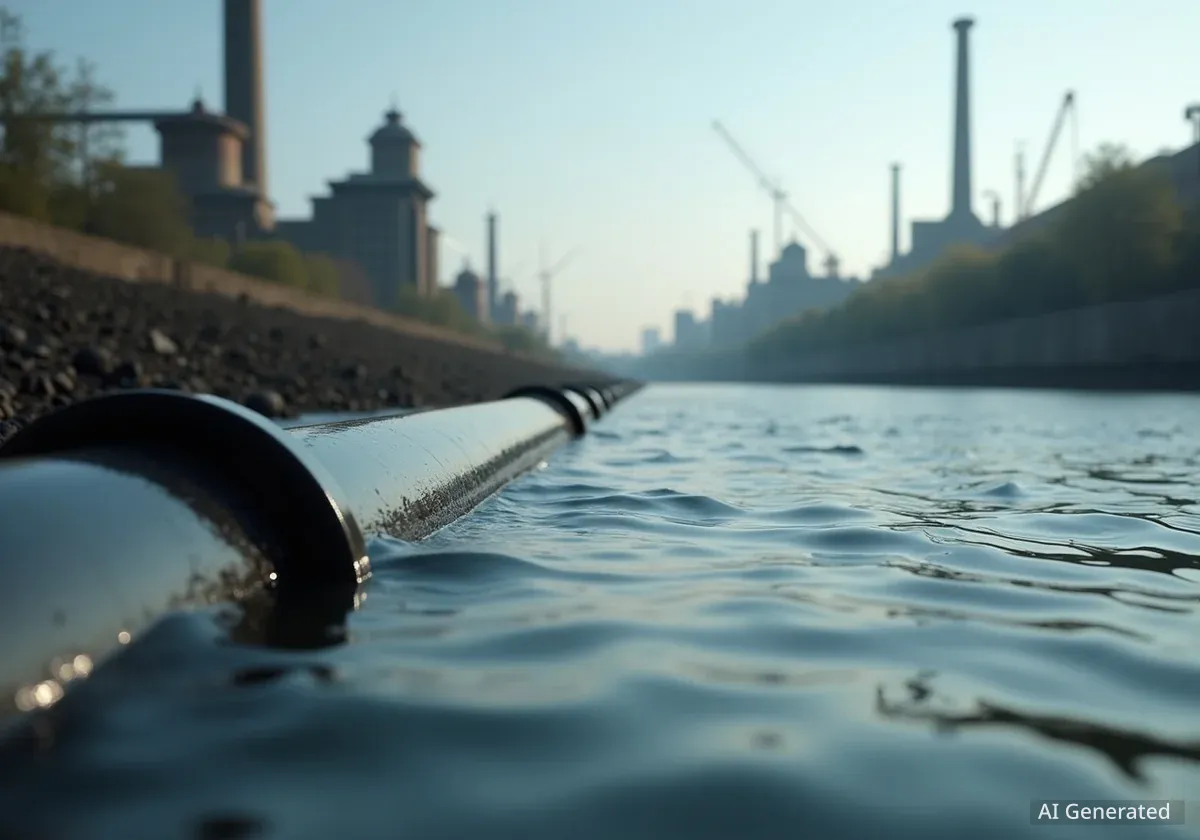Paris is using the Seine River to cool hundreds of its buildings, including offices and homes. This advanced system helps prevent urban overheating during summer months. Currently, a network of pipes and heat exchangers draws cool water from the river to regulate indoor temperatures for 800 structures across the city.
The innovative approach leverages the natural cooling properties of the Seine, providing an efficient and environmentally friendly alternative to traditional air conditioning. This initiative addresses the growing challenge of extreme heatwaves in urban environments.
Key Takeaways
- Paris utilizes the Seine River for a district cooling system.
- The system currently cools 800 buildings, including the Louvre Museum.
- It uses 60 miles of pipes and heat exchangers to transfer cool river water.
- Expansion plans will increase the network to 152 miles, serving 2,200 more buildings.
- This method helps reduce the urban heat island effect by avoiding heat discharge into streets.
How the Seine Cooling System Operates
The district cooling system in Paris operates by circulating river water through a closed network of pipes. These pipes, totaling about 60 miles (100 kilometers) in length, do not mix with the buildings' plumbing. Instead, they facilitate a heat exchange process.
Heat exchangers draw the naturally cool temperatures from the Seine's undercurrent. This cool water then circulates through the cooling systems of connected buildings. The air within these buildings is cooled as it passes over pipes containing the river water.
As the river water absorbs heat from the building air, its temperature rises. Once the water has absorbed enough thermal energy, it returns to the Seine. There, it releases the absorbed heat back into the river's larger body of water. This continuous cycle provides efficient cooling.
Cooling Efficiency
- Water is approximately 800 times denser than air.
- This density makes water significantly more efficient for storing and transferring temperatures.
- The system avoids pumping hot air into city streets, reducing the urban heat island effect.
Significant Expansion Plans Underway
The success of the Seine's district cooling system has led to major expansion plans. The current network of 60 miles (100 kilometers) of pipes is set to more than double. Future plans aim to extend the network to 152 miles (245 kilometers).
This expansion will allow the system to serve an additional 2,200 buildings. The growth highlights the city's commitment to sustainable urban development and climate resilience. It also shows the effectiveness of this cooling method.
"People are so proud of this system," a representative noted, highlighting the community's positive reception to this green infrastructure project.
Benefits Beyond Cooling
One primary advantage of district cooling, especially in dense urban areas, is the absence of heat discharge into the city environment. Traditional air conditioning units release hot air into alleyways and streets. This directly contributes to the urban heat island effect, making cities hotter.
By using the Seine, the Paris system avoids this problem. It transfers heat directly back into the river, where it dissipates naturally. This helps maintain cooler ambient temperatures in the city's core.
Urban Heat Island Effect
The urban heat island effect describes how cities are significantly warmer than surrounding rural areas. This is due to human activities and materials like concrete and asphalt, which absorb and retain heat. Air conditioners contribute to this by releasing waste heat into the atmosphere.
The Louvre Museum: A Major Client
Among the largest clients of Paris's district cooling system is the world-renowned Louvre Museum. The museum requires a substantial 12 megawatts of cooling power. This is 12 times more than the average building needs.
Maintaining precise temperature and humidity levels is crucial for preserving the Louvre's vast collection of artifacts and artworks. The river-based system provides this critical environmental control efficiently. The primary cost for cooling this massive underground structure is the energy needed to pump the water.
The Louvre's reliance on the Seine system underscores its reliability and capacity. It demonstrates how historical and culturally significant buildings can adopt modern, sustainable cooling solutions.
Challenges and Limitations
Despite its benefits, the Seine's cooling capacity faces certain limitations. Unlike deeper, colder lakes used in some other district cooling systems, the Seine is a shallow, UNESCO-protected river. This restricts opportunities for expanding its natural cooling potential.
For example, deepening the riverbed is not an option due to environmental and historical protections. Furthermore, laying new pipes in a city like Paris is a slow and complex process. Extensive archaeological surveying is required due to the city's rich historical layers. This can cause significant delays and increase project costs.
- Riverbed depth: Cannot be increased due to protection status.
- Excavation challenges: Historical layers necessitate slow, careful archaeological work for new pipe installation.
Responding to Climate Change and Heatwaves
Paris has experienced routine extreme heatwaves in recent summers. Each of the last four years has seen high temperatures. Access to cooler spaces is becoming a top priority for residents and city planners alike. This is similar to how warm spaces were essential a century ago.
Historically, in the 19th century, people could swim in the Seine to cool down. However, rampant pollution gradually made this impossible. Recent extensive cleanup efforts have restored the river's water quality. This means the Seine now contributes to cooling both those inside and outside of buildings.
The revitalization of the Seine for both recreation and utility represents a significant step. It effectively doubles Paris's cooling power by refreshing both the urban environment and its inhabitants.
Other Innovative Cooling and Heating Strategies
Beyond Paris, other cities are also exploring innovative climate control solutions. For instance, some district heating systems utilize excess heat from factories and data centers. This heat warms water, which then circulates to office spaces for heating. After heating the air, the water returns to reservoirs for reheating.
Similarly, New York City has seen buildings use ice storage systems for cooling. These systems create ice during off-peak hours when electricity is cheaper. The ice then melts to provide cooling during the day, reducing reliance on power-hungry traditional air conditioning units. These diverse strategies highlight a global shift towards more sustainable and efficient urban infrastructure.




